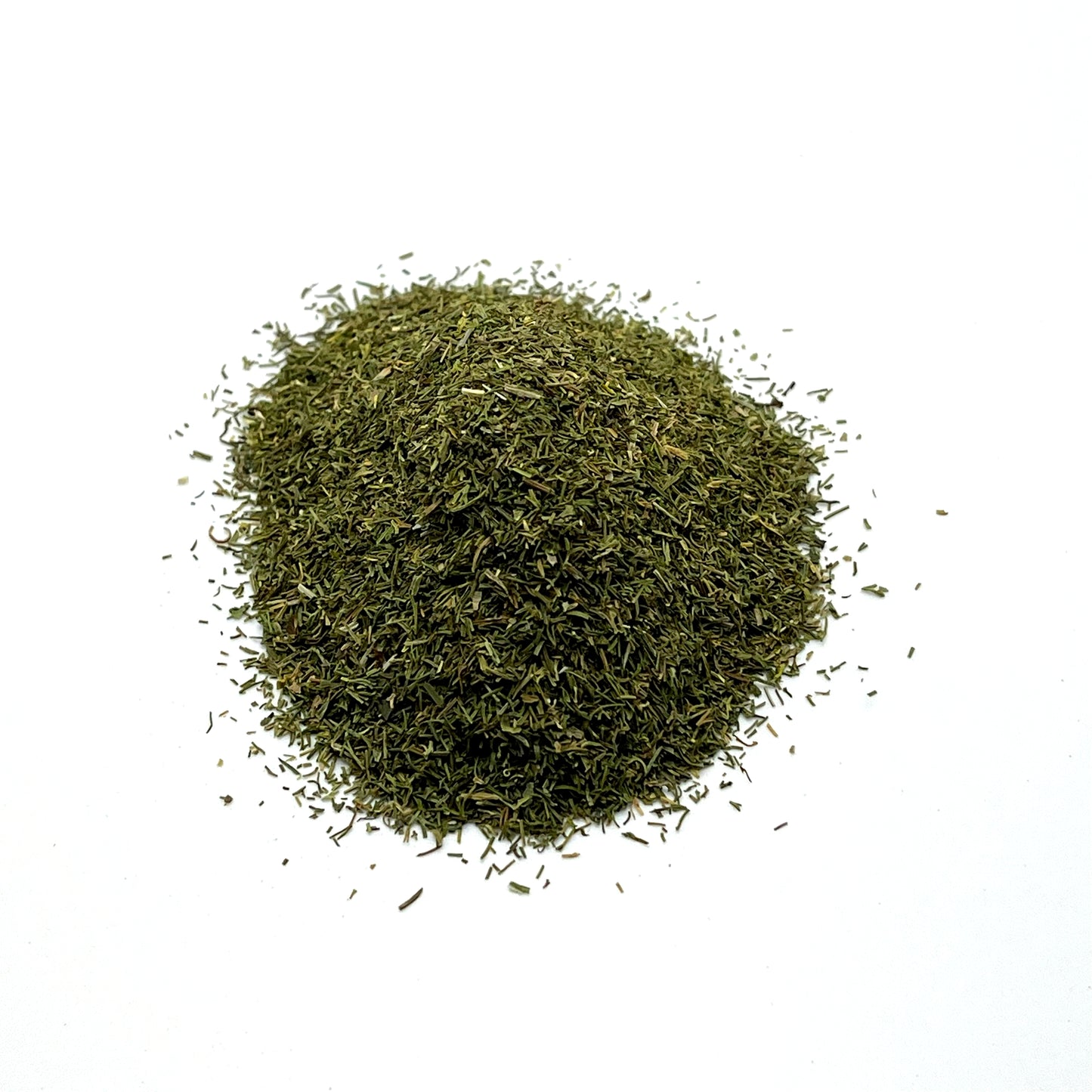Tasmanian Spice Traders
Dill Weed
Dill Weed
Couldn't load pickup availability
Botanical Name: Anethum graveolems
Flavor: Aromatic, Herbal, Sweet, Bright, with notes of Lemon, Menthol, and Licorice
Origin: Tunisia
Use With: Beef, Chicken, Turkey, Pork, Lamb, Game Meats, Fish, Seafood, Shellfish, Shrimp, Legumes, Vegetables, Rice, Cheese, and Baked Goods
Description: The dried, feathery leaves of the dill plant that is indigenous to Eastern Europe, the Mediterranean, and Southern Russia. When many hear the word ‘dill’, thoughts turn to pickles, however, Dill Weed lends its signature flavor to fatty meats, creamy soups, cheeses, baked goods, and much more in Indian German, Scandinavian, Asian, Russian, Eastern European and many other cuisines. Unlike Dill Seed which is added at the beginning of the cooking process in order to give it time to release its flavor, Dill Weed is added at the end of the cooking process, to uncooked dishes, or as a condiment in order to preserve its flavor
Suggested Uses:
- Add at the end of the cooking process to soups, stews, and sauces
- Add to pickling brines for all kinds of vegetables, eggs, fish, and meats to add a bright dill flavor
- Add to dry rubs and seasoning blends for a bright herbal note
- Mix with other dried herbs for herb crusted fish or chicken
- Mix into mayonnaise, yogurt, sour cream, or cream cheese to use as a sandwich spread, cracker topping, or a simple dip for vegetables
- Use both Dill Weed and Dill seed in baked goods to get the full range of dill flavor
- Mix into your potato salad, coleslaw, or add to salad dressings or sprinkle over a garden salad
- Sprinkle over roasted or smashed potatoes, dust over roasted vegetables, or


